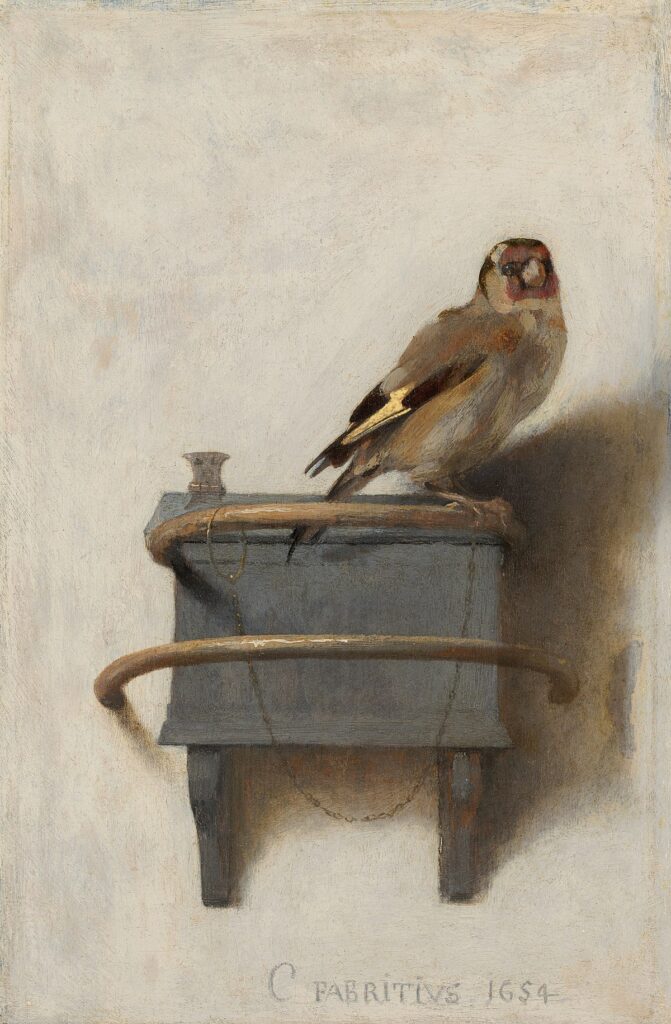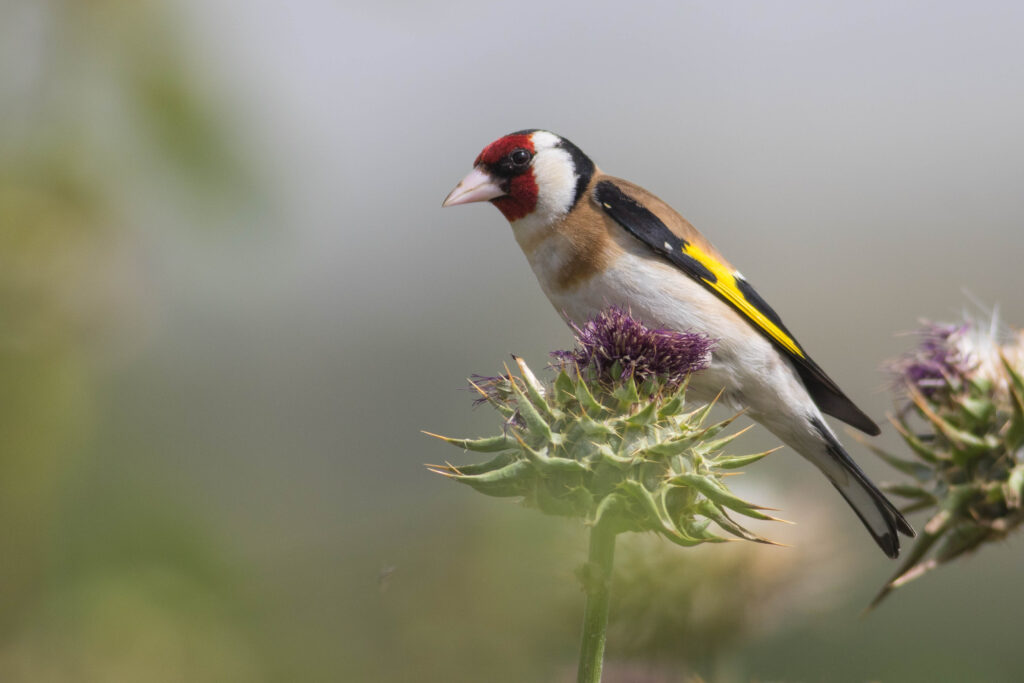Birds are a pretty homogeneous group. They all have feathers, lay eggs, and lack teeth, for instance. It’s easy to generalize, but there are nearly 11,000 species and each is unique. So once in a while I want to write about one particular species. Today, the European Goldfinch.

The European Goldfinch is an iconic bird, widely recognized. Goldfinches were popular pets in Europe in the past, as they could be taught tricks like drawing water from a bowl with a miniature bucket, ring bells, and pull miniature carts. In the 19th century thousands of goldfinches were caught and sold as caged birds in the United Kingdom. The famous 1654 painting by Carel Fabritius depicts a trained goldfinch sitting on its feeder, chained by its foot. An icon, the artwork gave rise to the epic novel about the painting.
Native across Europe to western Central Asia, the European Goldfinch has been introduced into the U.S., South America, Australia, and New Zealand. It is resident in the milder areas of its range, but may migrate south from colder regions.
The goldfinches’ preferred food are small seeds, like those of thistle, dandelion, and grass. While they almost exclusively eat seeds, the birds will take insects when raising young, as the offspring need protein. Goldfinches forage by hovering, moving from plant to plant, the stout and very pointed bill allowing the birds to extract the seeds from their coverings.

The European Goldfinch breeds in in loose colonies in forested areas, orchards, parks, and gardens, often near human habitation. During breeding season in the spring when thistles are blooming, the female, laboring alone but accompanied by the male, builds a deep nest in about a week and anchors it to a branch with spider silk. Made of moss, grass, and hair, the nest is often lined with thistle fluff as well as wool, fur and feathers. Five or six bluish eggs are laid, incubated by the female alone while the male feeds her. About two weeks later the young hatch and are fed by the parents for another week. Goldfinches typically raise two broods per season, occasionally three.
The European Goldfinch was significant in European art. Nearly 500 devotional paintings, mostly Italian, typically pictured a goldfinch with the Madonna and Child. In religious art, the red feathers of the goldfinch’s face was said to have come from the blood of Christ. A post-biblical legend developed about the goldfinch being a witness to the humiliating march of Jesus carrying the cross to Golgotha. A goldfinch flew above Jesus and was disturbed by the crown of thorns on his head. According to legend, the goldfinch flew down and tried to pluck off the thorns and as it did some of Jesus’ blood dripped onto the goldfinch’s head. The origin of the red feathers on its head appears to have originated from this event.
The belive of connection with christ and goldfinch is interesting. Love the article.